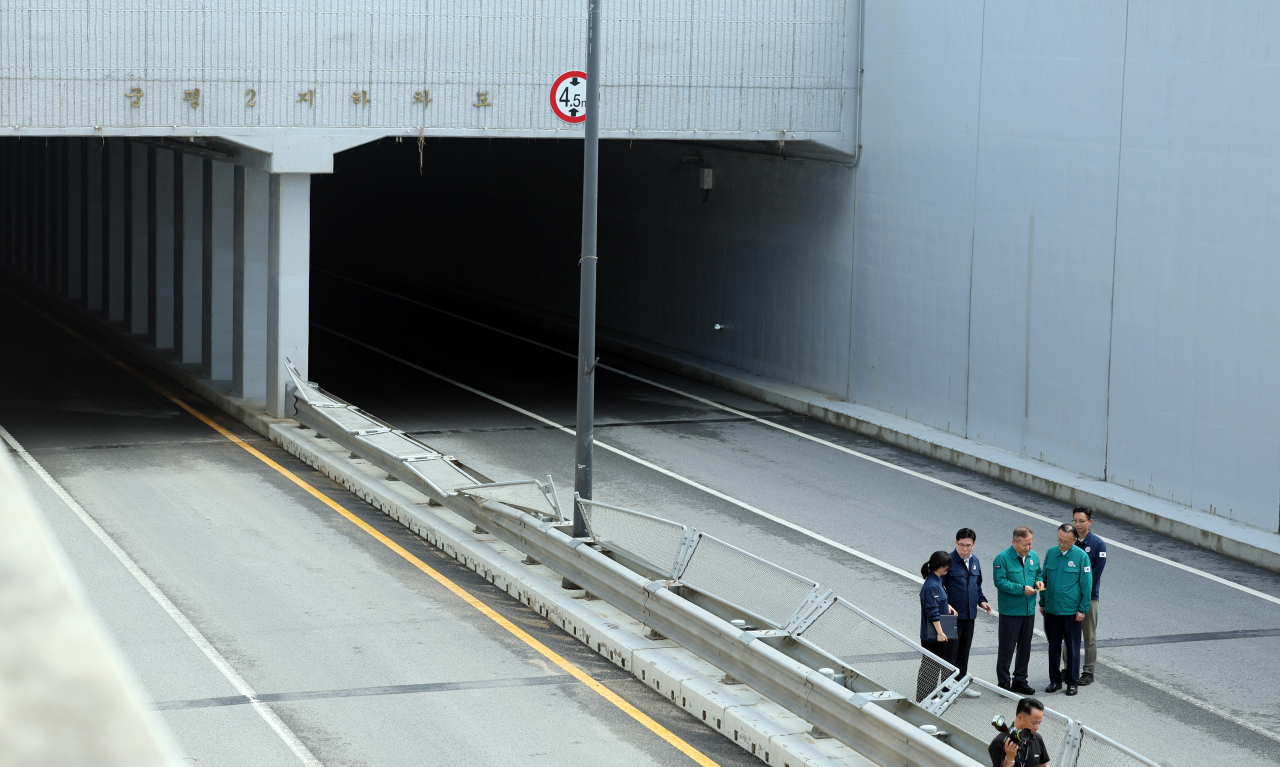 |
Interior and Safety Minister Lee Sang-min (third from left) visits Gunpyeong 2 Underpass in Osong-eup, Cheongju, North Chungcheong Province, Wednesday, where a flooding disaster left 14 dead and 10 injured on July 15. (Yonhap) |
SEJONG -- Prime Minister Han Duck-soo said Wednesday South Korea will overhaul its disaster response strategies to cope with climate change more effectively.
On Wednesday, Han told reporters he plans to discuss comprehensive reforms to the current disaster response system with government officials and lawmakers from the ruling People Power Party on Friday. He did not detail what specific measures would be introduced to deal with the effects of climate change.
Hans office will take charge of a new public-private task force that will be set up to coordinate the reorganization.
"Climate change, of course, is causing (severe) natural disasters, but in some ways, there is room for improvement from our end," Han said.
"Now is time for the government to pull out all the stops to completely change the current policies to tackle their shortcomings."
President Yoon Suk Yeol, in a regular weekly meeting with Han on Monday, had called for an overhaul of the disaster response system.
Earlier Wednesday, Interior and Safety Minister Lee Sang-min who returned from a five-month hiatus after the Constitutional Court rejected a motion to remove him, criticized the current disaster response system for its slowness to adapt to climate change.
The new plans aim to tackle administrative bottlenecks in disaster prevention and recovery, and increase state spending on disaster prevention and response, according to a statement Wednesday by the Interior Ministry, which is in charge of disaster response.
New standards for infrastructure design, traffic control and evacuation in case of an emergency will be determined based on the past five years of data, to better address the rapidly changing climate, according to the government.
The announcement came during a virtual meeting of the Central Disaster and Safety Countermeasures Headquarters on Wednesday over heavy rain in mid-July that killed 47.
The meeting presided over by the safety minister was attended by vice-ministerial level officials, including national police chief Yoon Hee-keun, national fire agency chief Nam Hwa-yeong and forest service head Nam Sung-hyun.
Following the meeting, Lee visited a mourning altar for the 14 people who were found dead in the inundated underpass in North Chungcheong Province.
Seoul considers the incident a major human-caused disasters. An ongoing state audit aims to identify those who failed to take adequate action in preventing the deadly incident.
Lee also visited regions in North Gyeongsang Province that were battered by the heavy rain.
During his briefing, Han endorsed Lee's role in the complete overhaul of the disaster management system, while his office will deal with policy coordination in the nation's pangovernmental effort.
The number of monthly deaths from the seasonal rain has approached that of 2011, when 78 people died, including 18 killed by a landslide on a mountain in Seoul.
From 2013 to 2018, casualties due to monsoon rain remained in the single digits, while the monsoon season in 2015 saw no casualties.
But the number of casualties rose to 18 in 2019 and 2020, and to 30 in 2022.






![[Today’s K-pop] Blackpink’s Jennie, Lisa invited to Coachella as solo acts](http://res.heraldm.com/phpwas/restmb_idxmake.php?idx=644&simg=/content/image/2024/11/21/20241121050099_0.jpg)
